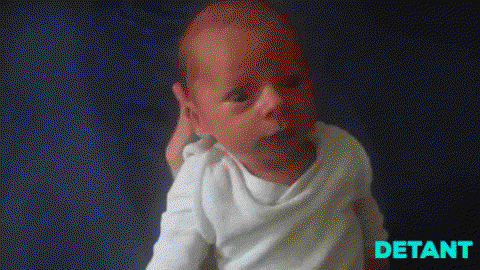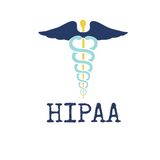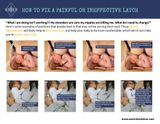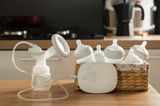Most of the clients I see have breastfeeding pillows, and they are often shocked and sometimes anxious when one of the first adjustments I suggest is to remove their pillow. The truth is, for the majority of people, breastfeeding pillows encourage a shallow latch.
If you just want to jump to how I recommend positioning yourself, head to "How to get a good latch", which also includes a video breaking down the steps.
We'll get to the reasons why these pillows encourage shallow latching, but first let's start with some basic concepts that can help parents feel more comfortable nursing without them.
Negative pressure (and the milk ejection reflex)
Parents tend to hang on to the idea that they need to lean over their baby, almost as if they are pouring the milk into their baby's mouth. That's understandable given how breastfeeding and chestfeeding are commonly represented. From how-to articles and tv shows, even to the educational materials provided to new parents, this same position is seen over and over again.
If there's one thing I want you to take away from this article it's that gravity has nothing to do with milk transfer. Successful transfer of milk occurs from a combination of negative pressure in the baby's mouth with milk ejection reflex in the parent's body.
What does that mean?
One of the aspects of being a lactation consultant I geek out about is working with a dyad—this is how we refer to the parent–baby relationship. And negative pressure is a great example of how this gets really interesting. It's a subject that probably deserves its own article—so more on this later—but for the meantime, keep in mind that the transfer of milk from parent to child is a two-part process:
- Negative pressure (from the baby): With a proper latch, the back of a baby's tongue moves up and down with each suck. This motion of the tongue moving down away from the roof of the mouth creates negative pressure and helps to draw out the milk.[1][2]
- Milk ejection reflex (from the parent): The negative pressure provided by the baby together with the hormones a parent's body produces when their baby is close to them creates the milk ejection reflex (aka let down) in the parent. (The cells in the nipple actually squeeze the milk ducts and make the milk come shooting out.)
Notice that gravity and positioning have very little to do with the mechanics here. The real takeway is that transferring milk to your baby is a function both of your bodies are engineered for! Try to shift your mental model away from imagining milk pouring out of your nipple like a funnel, and you will find it easier to see why you don't need that breastfeeding pillow.
How using a breastfeeding pillow encourages a shallow latch
With that in mind, let's look at some of the ways breastfeeding pillows get in the way of effective feeding.
Overwhelming the baby with milk
Using a breastfeeding pillow tends to put your baby in a position where they are partly on their side and almost on their back. If your milk comes quickly, this can make your baby feel worried about choking, so they pull back to slow the flow down to feel more comfortable. This can be painful for you and over all mean they don’t get enough milk and affect your milk supply long term.

Rolling away from your body
Another aspect of breastfeeding pillows encouraging babies to lie on their backs is that it's easy for babies to slowly slide away from you, especially as you inadvertently sit up straighter. Or they start to roll more on to their backs over the course of the feeding session. This tends to cause a painful shallow latch—or, if their head is significantly rotated, can make swallowing difficult.

Poor neck positioning
Next time you have a drink with a straw (which, if you've just had your baby, I hope you've had with you all the time!), touch your chin to chest and try and take a drink. Not an ideal position for swallowing!
Now try opening your mouth. Now try tilting your head back slightly past neutral and opening your mouth. In this second position you should be able to open your mouth much wider and more comfortably. It's very difficult using a breastfeeding pillow to avoid these less optimal positions.

Moro/startle reflex
Newborns have a pretty strong Moro reflex. This reflex is much more commonly exhibited when babies lie on their backs. Oftentimes, when laying them on their backs, their arms will jolt out to the sides.

Good latches are achieved by confident relaxed babies not ones being startled—and these often involve positions where they are being held firmly with their belly down.
Breastfeeding pillows are also bad for your body
Your body is important too! Your baby spends a lot of time feeding in the early days. Sitting hunched over, sometimes leaning to one side or the other, is going to leave you sore and even more exhausted for no good reason.
I began working with parents as a prenatal and postpartum massage therapist, and spent lots of hours working the tension out of parents' upper backs and shoulders. Parents shouldn't underestimate how this can affect them in the long term. You can find pointers on getting in a more relaxed position in my "How to get a good latch" video.
If you do feel like your baby latches well using your breastfeeding pillow, and you really want to continue using it, I still encourage you to lean back, holding your baby close. Make yourself comfortable! Remember, oxytocin is your best friend while making milk—so anything we can do to get you more relaxed will help get your milk flowing.
Lastly, the position breastfeeding pillows tend to put parents in is not conducive to recovering from either a vaginal or c-section delivery or other fun postpartum occurrences like hemorrhoids, as it puts a lot of pressure on your perineum as well as you abdominal muscles.
When a breastfeeding pillow is helpful
So there are lots of reasons I generally recommend against breastfeeding pillows, but the positives of using a breastfeeding pillow can outweigh the negatives. I am much more likely to recommend them to clients in these situations:
- you are planning to tandem feed multiples;
- you have limited mobility: depending on your limits this may be supportive (you may need may pillows to get comfortable);
- you have breastfeeding/chestfeeding well established, and using a pillow helps you to be more hands free while you feed.
If you have a great hack or tip I'm missing, reach out to me, I'd love to hear!
Have more questions?
If you have any questions or just want to chat with other families to find some community, come check out my Facebook group for families.
"The 'Anatomy' of Infant Sucking", Michael W. Woolridge, https://www.health-e-learning.com/articles/anatomy_of_latch.pdf ↩︎
"The mechanics of breastfeeding", https://blog.pnas.org/2014/04/the-mechanics-of-breastfeeding/ ↩︎




